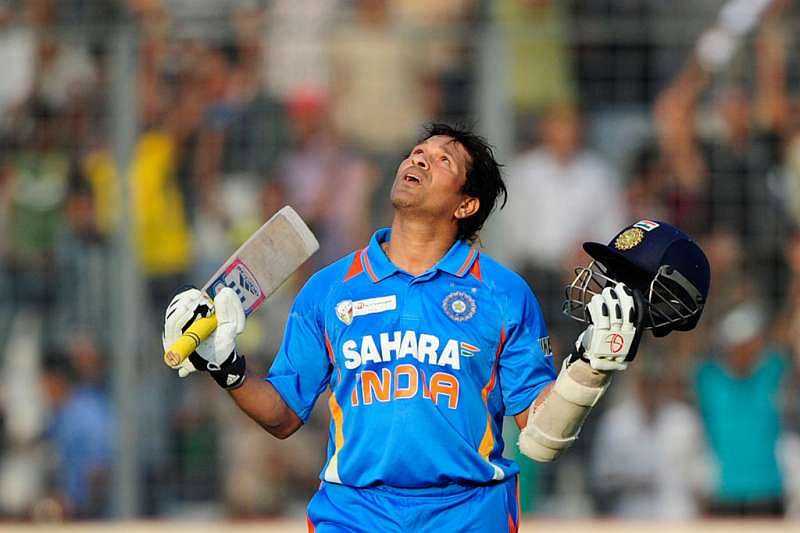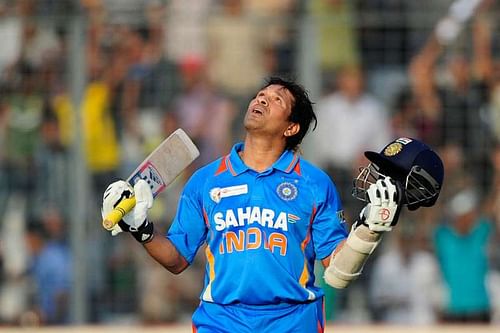
A game of averages: Are big hundreds the only way to judge greatness?
100 runs – Ever since the game of cricket came into being, that was the magic number that every batsman aimed to reach. To score a century is one of greatest feats that can be achieved in the game, and that is one of the few things that hasn’t changed about the sport since its inception.
Even today, the centurion always hogs the headlines, while the rest of the batsmen are relegated as footnotes, apparent second fiddles to the former.
A perfect example of the century obsession is the great man Sachin Tendulkar. If one has to pick out a single flaw in his batting, it was his temperament when he used to bat in the nervous 90s (impetus on the word ‘nervous’). This is probably why he holds an unenviable record of maximum dismissals by any batsmen between the scores of 90 and 100.
But as one observes the massive evolution that cricket has undergone in the last decade or so, the question needs to be asked – Is the number of centuries scored the only way to gauge a batman’s worth?
To understand this, let’s take into consideration the recently-concluded India – New Zealand Test series.
Let’s start with Cheteshwar Pujara. He had a great series in every sense of the word. Scoring 373 runs with an average of 74.6, is as good as it can get for any batsman. But till he scored that unbeaten 101 in the final innings, you could see how much pressure he had put himself under despite having consistently scored runs in nearly every innings (his only failure came in the second innings of the second Test, when he scored 4 runs).
The pressure only mounted every time you heard a commentator discuss how Pujara squandered an opportunity to score big despite having played a great knock.
There was a reason Wriddhiman Saha was declared Man of The Match in the second Test match, and it wasn’t for his keeping. It was his two unbeaten half-centuries, both of which came at extremely crucial times of the match and gave India the advantage.
If we look at Virat Kohli’s numbers this series, he ended with 309 runs and an impressive average of 51.5, despite having a poor series by his standards. But if you isolate a single innings (the 211 he scored in the final Test), he only scored 98 runs in 5 innings with a measly average of 19.8.
Now, let’s talk about my favourite topic: Rohit Sharma’s Test career. 21 Tests, 36 innings, 1184 runs, with an average of 37. Not too bad, right? Doesn’t deserve all the hate he gets, no? But let’s delve a little closer into the numbers. Rohit’s Test career started with a bang, where he scored two huge centuries (177 and 111*) against the West Indies. But if you just took those two innings away, that average drops to just a shade over 28. The numbers don’t look so rosy now, do they?
There are dozens of similar examples that I can give, but the point I am trying to make is that we need to stop celebrating only the centuries and start looking at batsmen for what they are offering to the team: stability, consistency, and dependency. The reason I chose numbers only from Tests is to show you that even in the oldest form of the game, the big scores aren’t the only ones that count.
This does not mean centuries have lost their importance in any way, it only means that we need to look at the context of every innings to judge the quality of a batsman and the value he adds to the team.
Give me an unglamorous batsman who quietly notches up a 50 every second innings over a batsman who will score a spectacular double century every once in a while, but not performing when his team needs him the most.
This logic isn’t limited just to Tests, but is especially true to the shorter formats of the game. I’d much rather have a batsman who scores a under-the-radar, quickfire 30 or 40 regularly rather than have a batsman who has a series of single digit scores but scores a huge century to inflate his average and his importance in a team. I’m looking at you, Glenn Maxwell.
Statistics are extremely important in judging the quality of a batsman; but we tend to cherry pick the numbers when we want to make a point, both while supporting or dissing a player. But what we really need to look at are the frequency of those runs scored. Yes, a higher average and more centuries will always make a batsman look good, but the real factor to prove his worth is whether he was there when his team needed him the most.
So let’s get over the century craze and learn to appreciate the stand-up guys, the guys who will always be there, doing their jobs quietly and effectively, even when nobody’s watching. They are the real MVPs.
Also read: 10 interesting stories and records about Virender Sehwag
